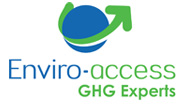By Maude Lauzon-Gosselin, eng.
Following the tabling of the Rapport de consultation de la Commission sur les enjeux énergétiques du Québec in February, several questions have arised regarding the control of our province’s energy. We must, without a doubt, improve our energy efficiency. Quebecers are among the largest consumers of energy in the world with the equivalent of 15 liters of gasoline per person per day[1]. Recently, Quebec has invested more in energy production (eg. wind power and hydroelectric) than in energy saving. In the rest of the world, it was quite the opposite. The result is that Quebec generates an energy surplus and struggles to sell it at a competitive price. This situation does not encourage consumers to reduce their energy consumption as they always have access to cheap energy while other countries are faced with energy shortages and high costs.
Trends are globally more focused on better energy management by users than improving the equipments and systems efficiency. In this context, ISO 50001 was launched in 2011. This standard is responsible for the maintenance of an energy management system for continuous improvement and overall energy efficiency of an organization. This system ensures the control and maintain of gains, while seeking to optimize energy performance. Moreover, like many other energy management systems, ISO 50001 integrates both the technical and managerial activities. The standard is intended to accomplish the following:
- “assist organizations in making better use of their existing energy-consuming assets;
- create transparency and facilitate communication on the management of energy resources and promotion of energy efficiency throughout the supply chain;
- lead to reductions in energy cost, greenhouse gas (GHG) emissions and other environmental impacts. Industries that have implemented and maintained an EnMS typically save 10-20 percent of energy within the first five years;
- promote energy management best practices and reinforce sound energy management behaviours;
- Assist facilities in evaluating and prioritizing the implementation of new energy-efficient technologies.”[2]
With all these advantages, it is not surprising that the number of certifications is growing rapidly. In February 2014 only, more than 1 600 sites have obtained the certification[3]. If you are interested in this approach, financial supports are available from federal (ecoEnergie) and provincial (Ecoperformance) governments. Throw yourself into the process now and reduce your energy bill!
[1] Rapport de consultation de la Commission sur les enjeux énergétiques du Québec
[2] Natural Ressources Canada. 2013. [Online] https://www.nrcan.gc.ca/energy/efficiency/industry/cipec/5379
[3] Authentic Energy Management Services. 2014. [Online] http://www.aems.ie/Pages/iso50001.aspx
